#Cloud infrastructure management
Text
Hire Cloud Developers: Web, Mobile & API Experts | Connect Infosoft
Hire Cloud Developers offers expert services in web, mobile, and API development, specializing in cloud technologies. Our team builds scalable, secure, and high-performance applications using AWS, Azure, and Google Cloud. Partner with us for innovative cloud solutions.
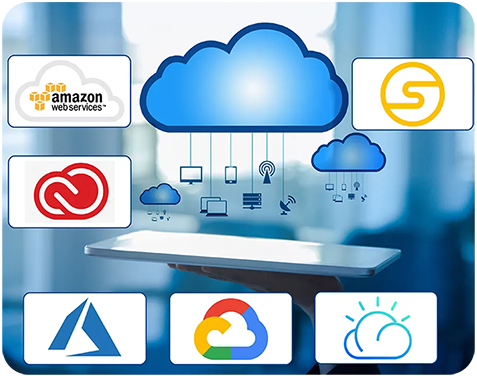
#Cloud Computing Development Services#Cloud Computing Development#Cloud Computing Service#Hire Cloud Computing Developer#Cloud application development#Cloud migration services#Cloud-native development#Cloud infrastructure management#Cloud DevOps services#Cloud security services#Cloud cost optimization
0 notes
Text
1 note
·
View note
Text
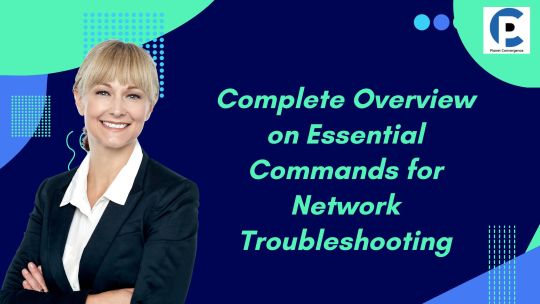
Know Essential Commands For Network Troubleshooting
Ensuring the optimal operation of Technology Solutions and Services and preserving smooth connectivity depend heavily on network troubleshooting. We'll go over the key network troubleshooting commands in this article, which allow admins to quickly locate and fix problems. These instructions are essential for figuring out network setups, identifying connectivity issues, and maintaining a safe and dependable network architecture.
#Network Troubleshooting#Cloud network management#Technology Solutions and Services#IT Solutions and Services#customized network tech services#Cloud infrastructure management#Infrastructure as a service (IaaS)
0 notes
Text
#Cloud and DevOps#Cloud based DevOps#Cloud Native Development#Cloud SecurityCloud Consulting services#Cloud migration#Cloud infrastructure management#Application modernization services over cloud
0 notes
Text
Terragrunt vs Terraform: Battle of DevOps tools
Terragrunt vs Terraform: Battle of DevOps tools @vexpert #homelab #terraform #terragrunt #infrastructureascode #cloudinfrastructuremanagement #devops #terragruntconfiguration #dependencymanagement #remotestatemanagement
Infrastructure as Code (IaC) has become widely adopted by many, including in production environments, developers, and home lab enthusiasts to deploy infrastructure. Terraform is arguably one of the top tools used by DevOps professionals. However, there is another tool you may not have heard about called Terragrunt. What is Terragrunt? What about Terragrunt vs Terraform? Are they competing…

View On WordPress
#Cloud Infrastructure Management#dependency management#infrastructure as code#managing multiple environments#remote state management#reusable terraform components#terraform#terraform modules#terragrunt#terragrunt configuration
0 notes
Text
IaaS: The Future of Infrastructure Management in the Cloud Era
Infrastructure as a Service (IaaS) is a cloud computing service model that provides virtualized computing resources, such as servers, storage, and networking, over the internet. Read more...
Infrastructure as a Service (IaaS) is a cloud computing service model that provides virtualized computing resources, such as servers, storage, and networking, over the internet. In an IaaS model, clients can provision, manage and scale computing resources on-demand, and pay for only what they use. IaaS providers use a multi-tenant architecture to pool computing resources, and clients can choose…
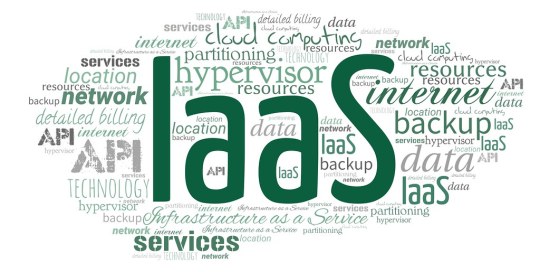
View On WordPress
#amazon web services#big data analytics#Cloud Computing#Cloud cost optimization#Cloud infrastructure management#Cloud migration#Cloud security#Development and testing#DigitalOcean#disaster recovery#E-commerce#Gaming#google cloud platform#Hybrid cloud#IaaS#IBM Cloud#Infrastructure as a Service#machine learning#Microsoft Azure#Oracle Cloud Infrastructure#Private cloud#Public cloud#Virtualization#Vultr#Web hosting
1 note
·
View note
Text
Things to remember when moving to public cloud | Cloud Migration | Zeacloud® Blogs

What does cloud migration entail and what to keep in mind
Organizations today are under pressure to digitally transform in order to remain competitive. Part of that transformation often includes migrating to the public cloud for greater efficiency and optimizing IT costs in the long term. If you're considering migrating to the cloud, remember it's not a destination but rather a journey. And it's one that needs to be carefully planned and executed in order to be successful.
Planning your digital transformation journey
According to Gartner, "digital transformation represents the changes associated with the application of digital technology in all aspects of human society."
In other words, it's a journey that can take many forms, and while migrating to the cloud may be at its center, there are several steps along your path to success. These include:
Continuously improving the customer experience
Streamlining business processes and increasing agility at scale
Enabling new business models with transformative technologies
The cloud migration journey
Migrating to the public cloud is a journey, not a destination. It’s also not one migration, but often a series of smaller migrations that result in a comprehensive cloud adoption strategy and plan. Although many organizations are well into their multi-year migration journeys at this point, some are just starting out. Here, we’ll focus on how you can get started on your cloud migration journey.
The first step as an organization planning digital transformation and cloud adoption is to ask a pertinent question: “What do we want to achieve?”
In order to build your cloud strategy, you must be clear about the business outcomes you want it to drive. Beginning with an outcome-based approach allows you to look beyond the infrastructure elements of IT and helps ensure your organization is on track with its digital transformation efforts. Asking yourself what you want to achieve will lead naturally into the next step.
Is public cloud the right choice?
Before making a choice, you’ll want to consider your business needs. Think about your business objectives and how public cloud can help you achieve them. Make sure you understand the cost factors that will determine whether public cloud is more affordable for your organization in the long run.
Once you have all that information, it’s time to make an informed choice about which option is best for your organization: public cloud or private cloud. So, to answer the question: is public cloud the right choice – yes, it is. Especially if you are just beginning your digital transformation journey and want to build an infrastructure quickly and cost-effectively to support deeper digitization initiatives.
Here are some of the most common reasons why you should move to the public cloud, and fast:
You want to get started with digital transformation quickly and cost-effectively
Your business can benefit from bottom-line benefits the public cloud offers that are not possible with on-premise infrastructure, such as reduced costs, unlimited storage, flexibility and other services through a pay-as-you-go model
How do you get started?
Start with a pilot project. As you begin your journey to the public cloud, consider starting with a "greenfield" application — i.e., an application that's being built from scratch. This allows you to take advantage of cloud-native approaches, including Infrastructure as Code (IaC) and DevOps processes, from the beginning. Use an IaC tool like Terraform or CloudFormation to define your infrastructure "code," then use a build tool like Jenkins or GitHub Actions to automate deployment and management of your application environments on the public cloud provider. If you don't have any greenfield applications available, start by reconfiguring part of an existing legacy app into containers with Docker or Kubernetes.
Choose one business-critical application for this initial effort; something important but relatively low risk would be ideal.
Get management support and sponsorship. The nature of most organizations requires buy-in from executives who can help overcome potential obstacles (such as resource constraints) along your path to transformation in the public cloud. It also helps if they validate what's in it for them (such as increased business agility). Then organize your efforts through cross-functional teams composed of people from IT operations, development/DevOps, security operations, risk management and finance.
Five cloud migration best practices, one digital platform
As you plan your migration to the cloud, there are five key areas that need to be addressed. Each of these will require attention from different stakeholders with varying skill sets. The platform — built on a machine learning-based engine — gives every stakeholder access to a single-view interface where they can see all the information they need for productivity and process efficiency. The best thing is that you don’t have to rebuild your data center (or your team) in order to migrate and run applications in the public cloud.
Plan and Prioritize Workloads
Design the Right Migration Approach
Configure and Test Your Environments
Migrate and Validate Your Applications
Optimize and Manage Your Cloud Environment
Migrating to public cloud is crucial to your digital transformation
When your IT infrastructure is in the cloud, it is easier to deploy new applications and services quickly. You can set up new virtual machines in seconds and start running them immediately. The cloud gives you more visibility into your IT environment, too, so you can see what's running, how many customers are using it, and what the load on each system is. This lets you scale your services to meet demands automatically, without a huge burden on budgets.
The cloud also makes it easier for you to gain new insights from your data by adding analytics capabilities that let you analyze large amounts of data quickly, and give employees a powerful way to explore information using business intelligence tools that help uncover trends and patterns across any dimension or variable in your data.
Scale your enterprise IT with an agile and fully customizable ZeaCloud® Public Cloud Solutions. Get in touch with us to know more.
0 notes
Link
Explore the technologies enhancing Financial Services and BFSI sector including the Financial Services cloud.
Features including account administration, financial planning tools, portfolio management, and compliance monitoring are available in the Salesforce Financial Services Cloud. To offer a complete solution for financial institutions, it also interfaces with other Salesforce products like Marketing Cloud and Sales Cloud.
#salesforce wealth management#Financial Services Cloud#Financial Services Cloud Trends#Salesforce Financial Services Cloud#Future Technolgy#Financial Services#Technolgy Trends#Artificial intelligence#Low-Code#No-Code#Low-Code Solutions#No-Code Solutions#Financial institutions#NBFCs#Assets management#Cloud implementation#Cloud-based infrastructure#Technology Adaptation#AWS financial services#Financial cloud salesforce#Cloud financial services#Salesforce for financial advisors#Financial cloud computing#Cloud based financial services#Salesforce finance#Salesforce FSC
2 notes
·
View notes
Text
Top Legal Technology Solutions Companies
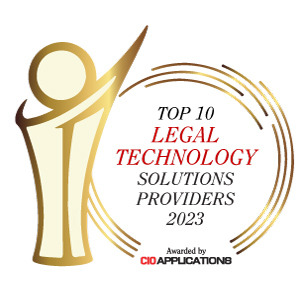
In today's fast-paced world, the legal profession is experiencing a profound transformation, and it's all thanks to the rapid advancements in legal technology. Gone are the days when legal professionals relied solely on paper-based records, endless hours of research, and face-to-face consultations. Legal technology is ushering in a new era, offering greater efficiency, transparency, and accessibility in the legal field. This editorial will explore the evolution of legal technology and the profound impact it has had on the practice of law.
#IT infrastructure#managed network services#process standardization#innovation#digital transformation#remote workstations#hybrid working#cloud management services#AI#machine learning#global market#outsourcing#revenue generation#Enterprise Networking Magazine#thought leadership#industry experts#market trends#virtual care services#partnership#efficient technology.
0 notes
Text
CenterGrid's Strategic IT Overhaul with VergeIO Redefines Managed Services in the Media and Entertainment Sector @VergeIO_Inc
CenterGrid Revolutionizes IT Infrastructure with VergeIO, Setting New Standards in Managed IT Services
In the highly competitive and dynamic field of managed IT services, technological advancement is not just beneficial; it’s imperative. CenterGrid, a distinguished Managed Service Provider (MSP) and Cloud Services Provider (CSP), has recently completed a significant overhaul of its IT…

View On WordPress
#Cloud Services Provider#IT Infrastructure Transformation#Managed IT Services#Media and Entertainment IT#Ultraconverged Infrastructure#VergeIO UCI
0 notes
Text
Exploring the Different Types of Cloud-Managed Services and Their Applications
Businesses increasingly adopt cloud computing in the fast-paced digital landscape to leverage its numerous benefits. Organizations can benefit from cloud services, which offer scalability, flexibility, and cost-efficiency. By outsourcing infrastructure management to experts, businesses can focus on their core competencies. As an AWS consulting partner, Flentas understands the importance of cloud-managed services and offers a comprehensive suite of solutions to assist businesses in optimizing their cloud environments. In this blog, we will discuss various cloud-managed services and their usage in contemporary business operations.
Infrastructure as a Service (IaaS)
Infrastructure as a Service (IaaS) is a basic cloud-managed service that provides virtualized computing resources over the Internet. With IaaS, businesses can access and manage their infrastructure components, including virtual machines, storage, and networks, without investing in physical hardware. This type of service benefits organizations seeking scalability and flexibility, allowing them to scale up or down based on their specific requirements. Additionally, IaaS enables businesses to offload the burden of infrastructure management to service providers like Flentas, who handle maintenance, security, and backups.
Platform as a Service (PaaS)
Platform as a Service (PaaS) is another cloud-managed service offering a complete application development and deployment environment. PaaS provides a platform that includes operating systems, programming languages, databases, and other tools necessary for application development. By utilizing PaaS, businesses can focus on developing and deploying their applications without the need to manage the underlying infrastructure. This service is particularly beneficial for startups and development teams as it streamlines the development process, reduces time to market, and eliminates the complexities associated with infrastructure management.
Software as a Service (SaaS)
SaaS, or Software as a Service, is a cloud-based service that allows businesses to access software applications through the Internet via a subscription model. With SaaS, organizations no longer have to worry about installing or keeping up with software on their servers, as the service provider handles all software delivery and maintenance aspects. This model offers significant advantages, such as reduced upfront costs, automatic updates, and access to applications anywhere at any time. SaaS applications are software that is available online, and examples of these include customer relationship management (CRM) systems, project management tools, and email services.
Database as a Service (DBaaS)
Database as a Service (DBaaS) is a specialized cloud-managed service that provides managed database solutions to businesses. DBaaS is particularly beneficial for companies that require highly available, scalable, and secure databases without the overhead of managing them in-house. DBaaS offers database management and administration without companies needing to set up and maintain their database infrastructure. DBaaS is particularly beneficial for companies that require highly available, scalable, and secure databases without the overhead of managing them in-house. Service providers like Flentas handle database installation, configuration, performance tuning, backups, and security tasks, allowing businesses to focus on their data-driven applications and analytics.
Backup and Disaster Recovery as a Service (BaaS/DRaaS)
Backup and Disaster Recovery as a Service (BaaS/DRaaS) is a critical cloud-managed service that ensures the protection and availability of business data in the event of data loss or system failure. BaaS/DRaaS solutions provide automated backups, replication, and recovery processes, allowing businesses to restore their systems and data in case of emergencies quickly. By utilizing BaaS/DRaaS, organizations can minimize downtime, prevent data loss, and maintain business continuity. Service providers like Flentas offer customizable backup and disaster recovery solutions tailored to specific business needs and regulatory requirements.
In conclusion, cloud-managed services play a pivotal role in enabling businesses to leverage the benefits of cloud computing while minimizing the complexities of infrastructure management. As an AWS consulting partner, Flentas understands the diverse needs of modern businesses and offers a range of managed services to optimize cloud environments. Whether it's infrastructure management, application development, software delivery, database administration, or data protection, Flentas provides comprehensive solutions to help businesses thrive in the cloud era. By partnering with a trusted managed services provider like Flentas, organizations can focus on their core objectives, enhance productivity, and achieve greater agility in today's dynamic market.
For more details about our services, please visit our website – Flentas Technologies
0 notes
Text
Unleashing the full Power of Data Mesh with Databricks Lakehouse for Modern Enterprises
Discover the transformative power of Data Mesh and Databricks Lakehouse! Our latest blog delves into how this integration enhances data flexibility, boosts efficiency, and accelerates insights. Perfect for modern enterprises looking to upgrade their data

View On WordPress
#AI and Machine Learning#Big Data Solutions#Cloud Data Management#Data Architecture#Data Governance#Data Mesh#Databricks Lakehouse#Decentralized Data Management#Innovation in Data Handling#Operational Efficiency#Real-Time Analytics#Scalable Data Infrastructure
0 notes
Text
Optimizing Operations with Network Automation: Best Practices and Solutions

Network Automation is a game-changer in the realm of IT operations, offering a plethora of benefits for optimizing network management tasks. To harness its full potential, organizations must adopt best practices and implement effective solutions. In this blog post, we will explore some key best practices and solutions for optimizing operations with Network Automation.
Automating Routine Tasks
The cornerstone of Network Automation lies in automating routine tasks such as configuration changes, device provisioning, and network monitoring.
By automating these repetitive tasks, organizations can streamline operations, reduce manual errors, and improve overall efficiency.
Utilizing Orchestration Tools
Orchestration tools play a crucial role in managing and coordinating automated processes within the network.
Network Automation tools provide a centralized platform for designing, executing, and monitoring automation workflows, ensuring seamless integration and efficient operation.
Implementing Self-Healing Mechanisms
Self-healing mechanisms leverage Network Automation to detect and remediate network issues automatically.
By implementing proactive monitoring and alerting systems coupled with automated remediation scripts, organizations can minimize downtime and improve network reliability.
Integrating with Monitoring and Analytics
Integrating Network Automation with monitoring and analytics tools enhances visibility and insight into network performance.
By collecting and analyzing real-time data, organizations can identify trends, predict potential issues, and proactively optimize network resources.
Standardizing Configuration Management
Standardizing configuration management practices is essential for maintaining consistency and compliance across the network infrastructure.
Network Automation enables organizations to enforce standardized configurations, ensure adherence to security policies, and streamline auditing and compliance processes.
Implementing Change Management Processes
Implementing robust change management processes is critical for managing network changes effectively.
Network Automation can facilitate change management by automating change requests, approvals, and deployment processes, ensuring minimal disruption and maximum efficiency.
Get More Insights On This Topic: Network Automation
#Network Automation#IT Automation#DevOps#Network Management#Automation Tools#Software Defined Networking#Infrastructure Automation#Cloud Computing
0 notes
Text
Ansible vs Terraform: Best DevOps tool?
Ansible vs Terraform: Best DevOps tool? @vexpert #vmwarecommunities #homelab #ansiblevsterraform #cloudinfrastructuremanagement #provisioninginfrastructure #configurationmanagementtools #infrastructureascode #multiclouddeployment #networkautomation
Ansible and Terraform are excellent DevOps tools that can provide many automation benefits in enterprise and cloud environments. Both of them have capabilities that can overlap with each other. However, I would say that each has its strengths in configuring and provisioning infrastructure. Look at Ansible vs Terraform and see which automation tool is best for which task.
Table of contentsAt a…
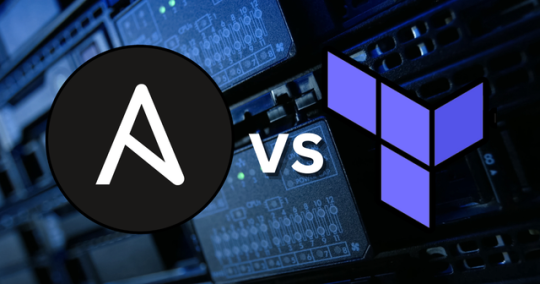
View On WordPress
#ansible vs terraform#automation tools comparison#Cloud Infrastructure Management#configuration management tools#immutable infrastructure approach#infrastructure as code#managing cloud services#multi-cloud deployment#network automation with ansible and terraform#provisioning infrastructure
0 notes
Text
The Power of Serverless Computing: Practical Examples and Benefits
Discover the power of #ServerlessComputing, from cost efficiency to real-time analytics, with practical examples in this insightful article! Say goodbye to server maintenance and hello to #FaaS innovation. #CloudComputing #TechTrends
Serverless computing has revolutionized the way developers build and deploy applications. It offers a cost-effective and efficient alternative to traditional server-based architectures, providing businesses with the flexibility to focus on code and functionality rather than managing infrastructure. In this article, we will explore the concept of serverless computing, its advantages, and provide…

View On WordPress
#AWS Lambda#Azure Functions#benefits of serverless#chatbot development#Cloud Computing#Cloud Services#Cost Efficiency#event-driven architecture#FaaS#Function as a Service#Google Cloud Functions#infrastructure management#practical examples#real-time analytics#scalability#scheduled tasks#serverless computing#serverless platforms
2 notes
·
View notes